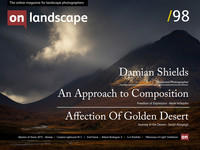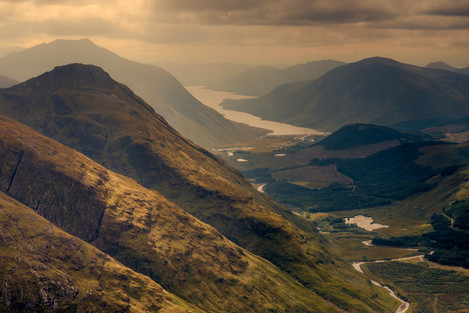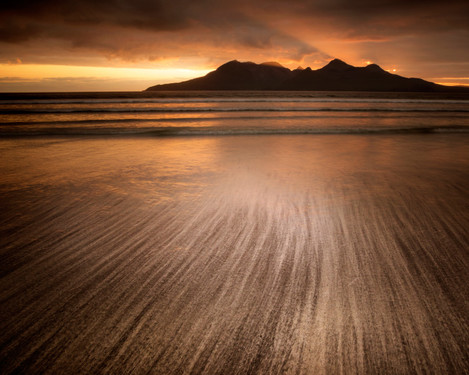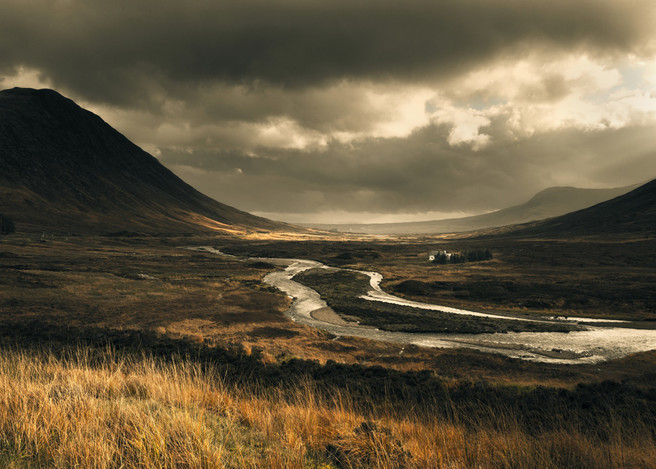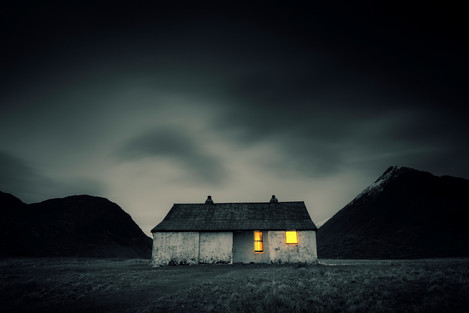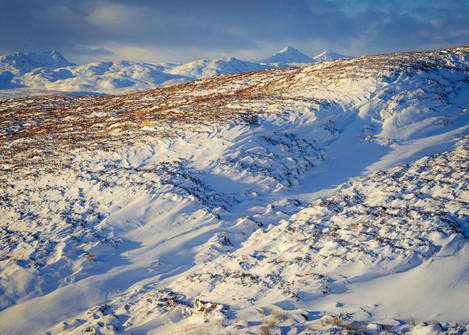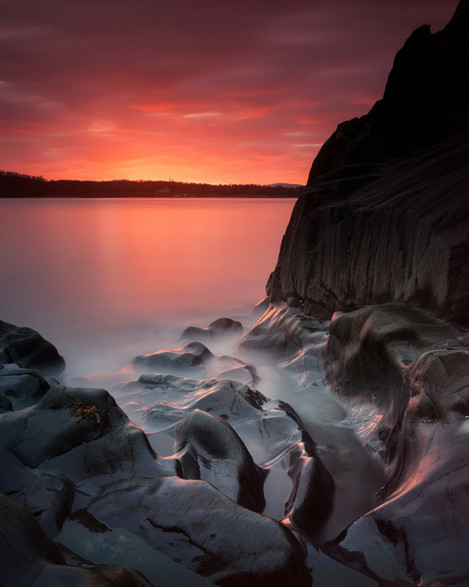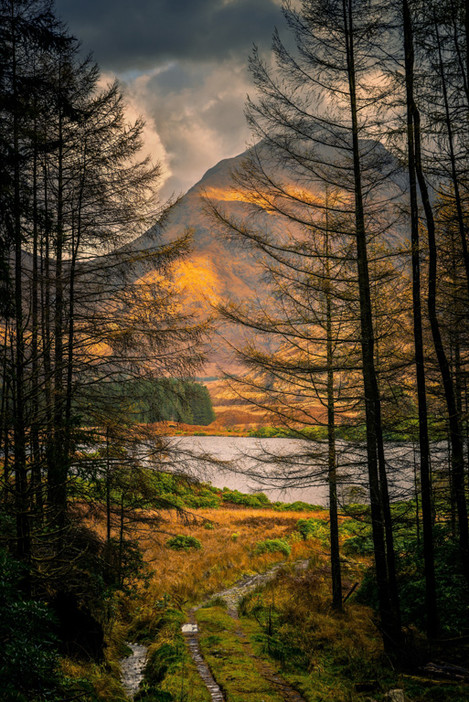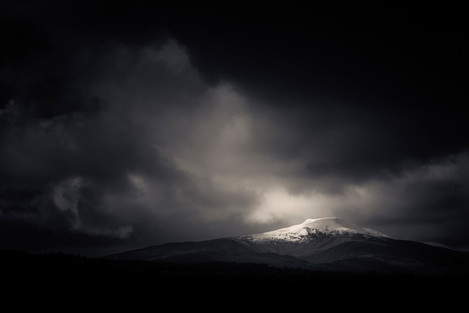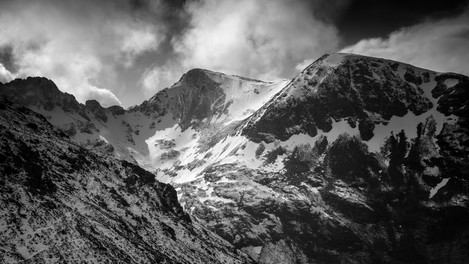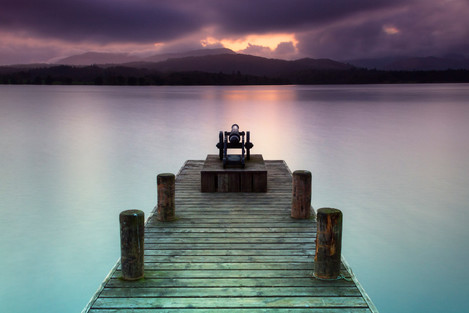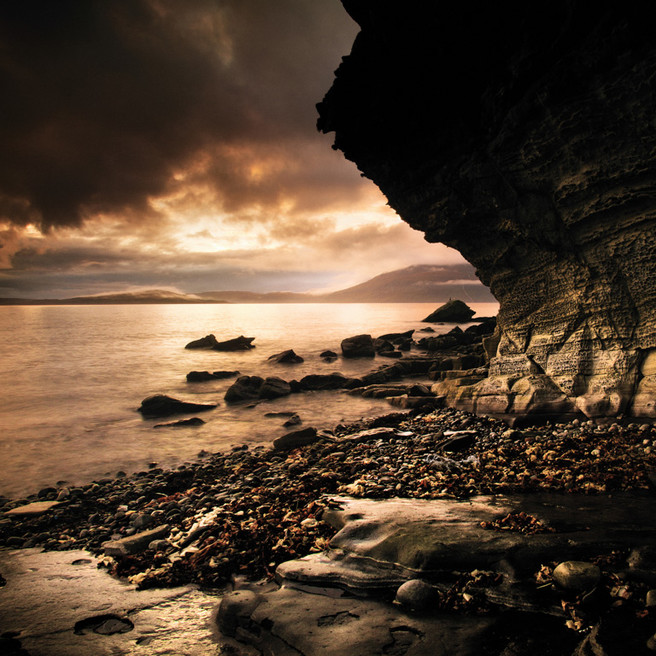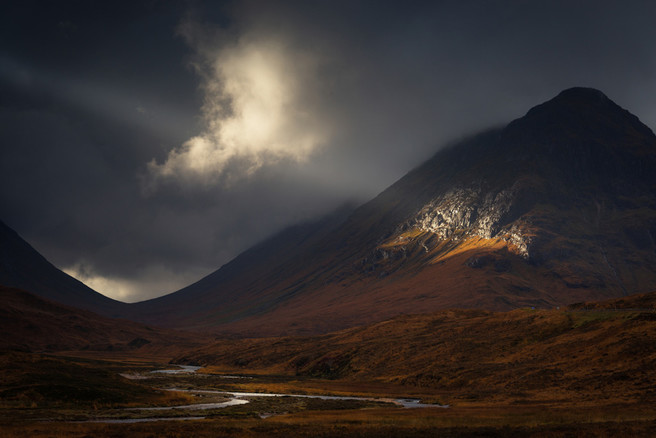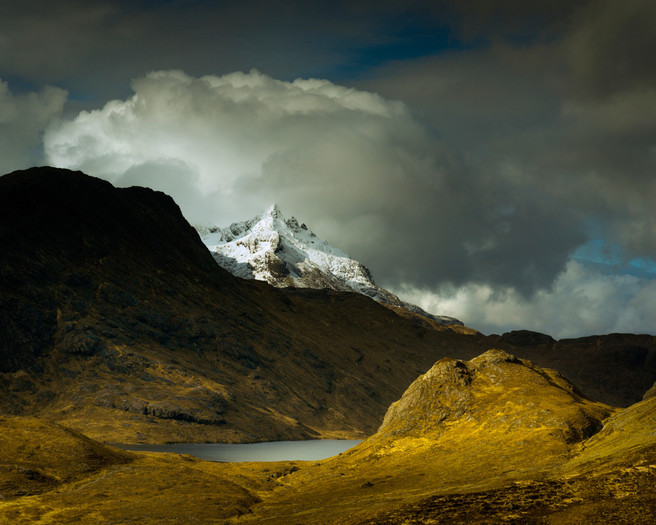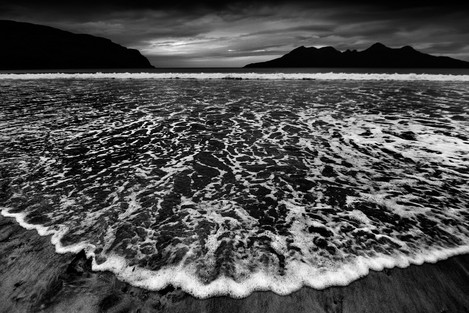Featured Photographer

Damian Shields
Initially more at home with charcoal and oil paint, Damian began exploring the creative possibilities of photography in the mid-nineties. During a portfolio presentation course he became involved in darkroom processing and printing black-and-white film. This sparked the beginnings of a love affair with the medium which subsequently gained him acceptance to the Fine Art Photography department of Glasgow School of Art under landscape photographer Thomas Joshua Cooper.
damianshields.photoshelter.com

Michéla Griffith
In 2012 I paused by my local river and everything changed. I’ve moved away from what many expect photographs to be: my images deconstruct the literal and reimagine the subjective, reflecting the curiosity that water has inspired in my practice. Water has been my conduit: it has sharpened my vision, given me permission to experiment and continues to introduce me to new ways of seeing.
When I call, Damien’s melodious Scots accent and infectious enthusiasm for his photography set aside any qualms created by his direct self-portrait. I’ve already picked up from his website that he has an eclectic and far reaching number of influences.
In conversation and in writing, his passion is obvious, and he admits to a childlike sense of wonder and anticipation when planning a trip – along with the degree of anti-climax when not shooting that is familiar to many of us.
Would you like to start by giving us an idea of where you live and work, and where you like to photograph?
I was born in Toronto, Canada in 1970 where my Liverpudlian father was studying sculpture at Ontario School of Art. After my elder brother, sister and I were born, my parents moved back to my mother’s family home in Scotland for good. After moving around several areas of North Lanarkshire, we finally settled in the post industrial town of Coatbridge.
I currently live there with my wife and two boys after doing a wee bit of roving of my own. I work as a full time graphic artist and retoucher for the Herald and Times newspapers in Glasgow, a position I started not long after leaving art school in the late 90's. The areas I gravitate towards, camera in hand, are mainly the west and north west regions of Argyll, the Trossachs, and Highlands.
For all the iconic locations that Scotland offers, you are always seeking to find your own interpretations, whether they come from pre-visualisation or, on occasion, happy accident?
I think that interpreting the classic views and iconic locations from the traditional stand-points are a necessary phase for any landscape photographer. By doing so myself, I eventually found my own path branching off from the well-worn trail. I'm no longer interested in adding to the pile, of skyscraper proportions, of the same takes from the same position of the same places again and again. I am always pushing myself to find the road less travelled.
Whether pre-visualized or happy accident, these routes to image creation are equally satisfying for different reasons and I'm constantly trying to improve on both. I get enormous satisfaction when I've put the effort in and got close to what I imagined. I can’t recommend careful planning enough. Luckily we live in a digital age where we can research locations from the comfort of home and get an idea of what to expect before we arrive.
A first visit, I usually put down to investigation, and consider shots from a first foray carefully to guide me to a closer understanding of how to approach on the return. The rest of the equation is being there when conditions are right, although the weather here is always conspiring to throw you plenty of curve-balls!
Then there are those times when I find myself witness to something special, a fleeting alignment of elements like a tantalizing wink from nature aimed directly at me. When this happens I can get too excited and I'll fumble around like a nervous schoolboy, I need to be able to rely on the photographic auto-pilot to a degree to successfully catch it before all is lost or mental self-flagellation ensues. I need to instinctively know my camera's limitations and capabilities, so that when a 'decisive moment' arises I will be prepared.
You love Scotland’s “big weather” even if at times it does frustrate your plans?
Aye, its temperament is a fickle thing, especially the farther north you go. I love it, and always try to be prepared to take advantage. Scotland's landscape and the different aspects of its unique character are enhanced by the ever changing light and atmospheric conditions that are intrinsic to its identity. The kind of weather that forecasters describe as ‘changeable’ or ‘intermittent’ are my favourite conditions, this is when the drama happens. I guess of all the conditions, heavy rain, and the dreaded midge, are the biggest flies in the ointment but dreich equals mood and mood is good.
Tell us a little about your background (education, childhood passions, early exposure to photography and vocation)? You were immersed in the arts from an early age and these have been a key influence on your photography?
After art-school, my father went on to a successful career as a practising artist and teacher, so my early environment was populated with all aspects of art. The family home was crammed with paintings, sculptures and prints (to a constant jazz soundtrack) and I found myself with good enough draughtsman-ship to stand out in art classes at school. I had always been cast to succeed my father’s vocation as an artist (in the traditional sense) myself but got distracted by other pursuits at the tail-end of high school especially computing and electronics.
After a good few false starts in more technical based courses I came full circle back to the arts again determined to gain acceptance to Glasgow School of Art. My first real taste of things to come was by shooting / developing black and white film as part of a portfolio preparation course. Simple portrait work in a gloomy room with a single shaft of sunlight spilling down the side of a face reminded me of the wonderful Jan Vermeer and Caravaggio's observations of one-directional light.
I was excited by the way the relationships of darkness to light opened up so many interpretations of a person’s character. Afterwards I was accepted to GSA, and my eyes were opened. I wanted to be a photographer. I found myself choosing the fine art photography department having ditched the initial plan to go into drawing and painting.
Which photographers, artists or individuals have most inspired you?
Mmm, where do I start? I guess the aforementioned masters of painting and the schools of impressionism were my earliest artistic influences. The depiction of sunlight across sleepy rural life in Camille Pissarro's landscapes, Van Gogh's visceral obsession with paint, Samuel Palmer’s visionary interpretations of pastoral scenes, Turner’s attempt to define the indistinct nature of ethereal light and the pre-Raphaelites’ dedication to the reality of nature.
All these people had a purity of directed vision that helped them connect to the land on the deepest level, transcending the medium they chose. I'd like to think that they'd all be immersed, and in love with, photography if they lived today. I looked at many photographers over the initial years of learning the craft but, I must admit, I feel I've progressed to a point where I have found a sphere of working I'm content with. I don't feel comfortable to idolise now.
I do still admire the work of many landscapers I follow on social media but I don't want too much distraction if I am going to progress to where I need to be. I still go back to Ansel Adams' beauty in simplicity to earth myself, and still aspire to his dedication in technique, but I took the posters down a while ago.
Have you had any moments where things become clear, or new directions were formed? How did they change your photography?
I think I had a wee moment of clarity when I stopped worrying about having the best, and loads of, gear and that everything had to be technically perfect. I was infected by this way of thinking early on, looking at too many glossy landscape photo magazines chock-full of lickable pictures. Seductive over-saturated landscape pornography, juxtaposed with specification-heavy techno-babble cosying up to ads for stuff you couldn’t afford. You were left feeling inadequate.
I began to concentrate my efforts into composition and understanding visual language, not just looking, but seeing. Now I see equipment as vehicle, a means to an end. The important thing for me now is communication. I'm learning to speak a new language, slowly understanding and beginning to respond.
What is, for you, the appeal of landscape photography?
I find the process from start to finish extremely satisfying and it’s become a drug to me. The boy in me still loves the exploration and discovery (and playing with gadgets) and I return home full of excitement at what I have captured like bees in a jam jar. I enjoy and need the escape from the sometimes sobering realities of modern living, controlling a machine as opposed to being part of one.
I see the very DNA of beauty hard coded in all aspects of the natural world, in symmetry, pattern, texture, colour, contrast, scale, shape and the relationships of them all to each other. Beyond that is the way being in a landscape stimulates my senses. The rush of a river in spate and the salt tang of sea spray, watching silvered light play across a moor, the cold rough surface of an ancient rock and the deep musk smell of a forest floor.
Just as a portrait photographer uses the position and nature of a light source to change the way we perceive a person’s character I'm captivated by the way the sun moves over and across the land, describing different facets of a landscape’s personality. I'm interested in the relationships of light to shadow, what is revealed and what is hidden. Mystery lives in the darkness and where the light falls is illumination.
You mentioned that you are constantly searching for reflections of yourself and looking for an emotional connection?
There is a fantastic clarity of thought I get when I remove myself from my normal environment and place myself in the landscape. When I was young, my head was full of seemingly un-answerable questions about reality and at that time, being raised a Catholic, a lot of these answers were attributed to a mysterious god who was wrapped in layers of mystery and lived somewhere in the chapel, and everywhere else, simultaneously.
I no longer consider myself Catholic any more, but I loved the romantic element of enigma and the hallowed ground for quiet reflection on the soul. So not ‘throwing the baby out with the bath water', the landscape, and photography, has provided me a kind of replacement church where I go looking for my place in all things bigger than me.
Photography isn’t just a visual medium though? You talked about seeing it as a form of sign language, offering you something akin to storytelling?
I see metaphors in the elements - water can be emotion, trees can be aspiration, and mountains can be struggle. I'm trying to read and decode this ancient classical language of elements through a rose tinted lens of romanticism. My dreamer’s ears hear whispers between the rocks, rivers, trees and skies and I try to visually describe the conversations I've heard, in a Scottish accent of course. I've always been interested in symbolism, composition and colour theory. At art school I spent some time studying the way advertising used the relationships we have with symbols to reinforce ideas.
I delved into the esoteric world of hidden geometry, how artists would divide a space to move the eye around and I also spent many hours in the library poring over Johannes Itten’s Bauhaus bible ‘The art of colour‘. I’m always conscious while looking through the viewfinder of the ‘weight’ given to the various parts of the frame and where they lie in relation to each other, what you leave out is just as important as what you leave in.
There’s also a lot you can do through post production to change the way you perceive an image. Dodging and burning and contrast control can create different emphasis; split toning with colour can also imbibe a ‘feeling’.
Which cameras and lenses do you typically take on a trip and how do they affect your photography?
I currently shoot with one body, the Nikon D800, and will sometimes use my phone’s camera to quickly consider framing and cropping. I have always pursued wider tonal range and resolution with each camera upgrade through the years. In the early days I used to stitch several exposures to achieve larger files but now I am more than happy with my D800's ability to capture huge ranges of information in a single frame. Lens-wise, I currently use a Sigma 28-70mm, a Nikon 50mm and a Nikon 24-85mm which is on the camera 90% of the time. I occasionally take along a Nikon 200mm.
You took a more practical and applied career path after Art School which gave you experience of digital publishing and a head start in the “dark arts” of post processing? How does this inform your vision and style? Give us an idea of your workflow.
I try to resolve my images, from RAW, almost exclusively in Lightroom. I am rarely a purist in my representation of the land and try to push things towards an Impressionistic feel that speaks more of where a place exists in my mind as opposed to reality. Nowadays I only use Photoshop to check levels, clean-up, stitch and sharpen work.
As a retoucher, freelancing or for the press, my main considerations are fine tuning an image to achieve the best quality for printing and impact. Honing my skills with Photoshop for a long time has definitely improved my own work, but in hindsight, this fed into my images too much initially. I now try to hold back on using digital techniques for their own sake. I still see far too much emphasis on adding the ‘wow’ factor in post-production than aiming for better photographic skills.
Filtering has its place and can amplify presence and emotion but I’m enjoying learning subtlety and lightness of touch more now. It’s something I feel is harder to learn but more satisfying than always pumping up the contrast.
How did your “Outside Inside” exhibition came about? You previously exhibited a “Doors Open Day” portfolio, but this is your first ‘real’ solo show?
I had always wanted to have a wee exhibit of my landscapes but I wanted to wait until I felt I had progressed to a point where I was more satisfied with what I was producing and had built up a substantial body of work before putting myself 'out there'. The ‘Doors Open Days’ commission for the Scottish Civic trust last year landed me an exhibition in Kelvingrove Art Gallery, which was fantastic.
I then made up my mind to mount a show at the first chance. Luckily, my father had been chatting to a friend whose brother had just opened ‘Gesso’ coffee lounge in Glasgow (coincidentally just down the hill from my old GSA photography department) and was keen to promote the excellent space at the rear of the business as an exhibition venue, so I grabbed the opportunity with both hands.
How do you choose to print and present your pictures?
I bought an Epson R3000 last year which gives stunning results but I usually send my larger work out to the brilliant ‘Deadly Digital’ Lab in Partick. They produce stunning giclée prints on a wide variety of heavyweight papers.
What has been your experience of being both artist and curator?
The most stressful time was the day of the opening; I was more concerned with the hanging, getting it all up in time, than the actual preview. The whole ordeal was worth it in the end though, it was a braw night.
I know you’ve said that you are uncomfortable with the idea of having favourite photographs – that they are all your children – but could you choose 2-3 images that have particular resonance for you and tell us a little more about them?
'The Annunciation', Stob nan Cabar, Glen Coe
NIKON D800, Nikon 24.0-85.0 mm, 1/250 sec, ISO 200, f/9, 66 mm. Raw processing and split toning in Adobe Lightroom
This was one of those special moments when the elements compose themselves before me like a fleeting gift to be grabbed in the brief moment it’s offered. I have lost count of the times opportunities have been forever lost while frantically getting into place and getting the camera set up. I noticed a break appearing in the heavy sky over Buachaille Etive Mor and a shaft of silvered light punctured through.
It began to glide its way across Lairig Gartain and I started to shoot off frames hand held for fear of missing out by setting up the tripod. The ray of light began to glitter off the wet rock on the side of Stob nan Cabar and illuminated a lone angel-like cloud morphing over the Coupall, the reflection defined the river below perfectly.
'Mercury's Garden', Sgùrr nan Gillean and Loch na Creitheach from Camasunary, Isle of Skye.
NIKON D800, Nikon 24.0-85.0 mm. 1/1000 sec, ISO 250, f/10, 85 mm. Raw processing and split toning in Adobe Lightroom
I shot this image in March on a photographic expedition with a friend to Camasunary on the Isle of Skye. The path over to the isolated bothy from Kimarie isn't far as the crow flies but was gruelling with a heavy pack and camera gear. The reward for the slog came at the highest point overlooking the bay between Slat Bheinn and Beinn Leacach. A beautiful light was playing across Loch na Creitheach and there was a wonderful dusting of winter snow still hugging the pinnacle of Sgurr nan Gillean that re-invigorated my legs and soul.
If you couldn’t do anything photography related for a week, what would you end up doing? Do you have hobbies other than photography or would the practicalities of life catch up with you?
Disconnecting from photography for a week would be impossible, but when I’m not working on other peoples’ images or shooting my own I just enjoy the family time, out and about. I have two young boys who spent far too much time, like me, with technology. I do like to nick out now and again for a spot of fly-fishing and spend a few evenings de-stressing in the video-game world.
Have you any achievements of which you feel particularly proud?
My exhibition in Kelvingrove stands out, I’ve walked the halls there for inspiration over many years, so to have my work displayed under the same roof as so many masters of art was a great feeling, as was being approached for the commission in the first place. The recognition I’ve gained over the years through competitions and being published has been good as well, but I am always my biggest critic, so these feelings don’t usually last very long. I still think about pride and the fall.
What sort of things do you think might challenge you in the future? Where do you see your photography going in terms of subject and style?
I guess the natural progression for me is to just keep doing what I’m doing while avoiding stagnation, and make sure I’m evolving. There are many stunning natural landscapes out there in the world that I’d love to explore but even though Scotland’s a tiny place in relation to the globe, I'm still only scratching the surface of possibilities. My love for Scotland, because it’s my home, and my identity, feeds back into my work in a way I don’t get from other places. There are still plenty of nooks and crannies to be explored.
Who would you like to see featured in a future issue?
I’d like to nominate Stuart Low. I met him in person for the first time at the opening of my exhibition though I’ve had many conversations with him over the last few months. Last year he single-handedly started the Scottish Landscape Photographer of the Year Awards, mostly at his own expense, and poured a lot of his spare time in this labour of love. He is a very experienced photographer with a great eye for strong composition and shares a deep passion for his country that comes across in his work.
Thank you, Damien. I think you’ll agree that Damian’s written answers carry the same melody that I found in his spoken voice. To see more of his images visit his website where you’ll also be able to find out which social media channels he’s active on.

